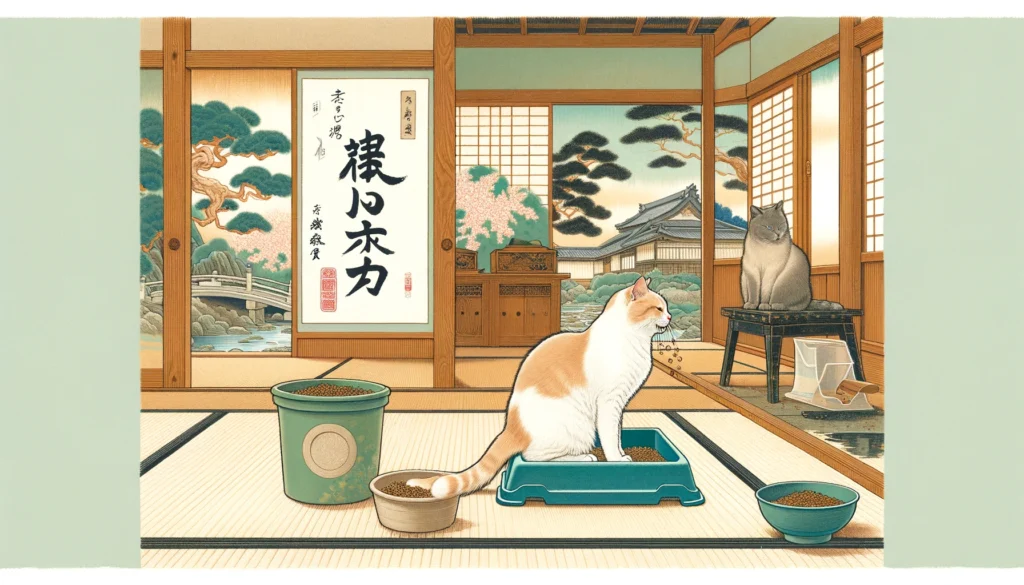When it comes to training your cat to use the litter box, many factors come into play—location, type of litter, and even the design of the box itself. But one aspect that often flies under the radar is diet. Yes, what you feed your feline friend can significantly impact their litter box habits. Let’s dive into the vital connection between your cat’s diet and successful litter box training, and how small dietary tweaks can make a big difference.
Why Diet Matters in Litter Box Training
Your cat’s diet doesn’t just affect their overall health—it directly impacts their digestion, stool consistency, and frequency of elimination. These factors play a significant role in how easily a cat can adapt to using a litter box.
Imagine this: If your cat has frequent diarrhea or constipation, their litter box experience becomes uncomfortable or even painful. As a result, they might associate the litter box with discomfort and start avoiding it altogether. Understanding this connection is key to setting your kitty up for success.
How Diet Influences Stool Consistency
High-Quality Protein for Digestive Health
Cats are obligate carnivores, which means their bodies are designed to thrive on meat. High-quality protein sources, such as chicken, turkey, or fish, provide the necessary nutrients for healthy digestion. Poor-quality protein, fillers, or excessive carbohydrates can lead to inconsistent stool—either too loose or too firm.
Tip: Look for cat food with real meat as the first ingredient. Avoid options packed with fillers like corn, soy, or wheat, which can upset your cat’s stomach.
Fiber: Finding the Right Balance
While cats don’t need as much fiber as humans, a small amount is crucial for smooth digestion. Too much fiber can lead to bloating and loose stools, while too little might cause constipation. Finding the right balance can help your cat eliminate comfortably, making the litter box a more appealing option.
Foods with fiber: Pumpkin (in small amounts) or specially formulated cat foods can provide the necessary balance.
Hydration: The Unsung Hero
Dehydration can lead to constipation, making litter box visits unpleasant for your cat. Wet cat food, which has a higher moisture content than kibble, can help ensure your feline stays hydrated and has softer stools that are easier to pass.
Pro Tip: Always provide fresh water alongside their meals and consider incorporating wet food into their diet for added hydration.

You May Also Like: Tips to Help Your Cat Adjust to a New Litter Box
Feline Diets and Litter Box Behavior
Food Allergies and Sensitivities
If your cat is consistently avoiding the litter box, consider whether food allergies or sensitivities might be to blame. Common culprits include dairy, beef, and fish. Allergic reactions can manifest as diarrhea or an upset stomach, making your cat reluctant to use the litter box.
Action Plan: Work with your vet to identify and eliminate trigger foods from your cat’s diet. Transition to hypoallergenic cat food if necessary.
Meal Timing and Routine
Establishing a consistent feeding schedule can also aid in litter box training. Cats are creatures of habit, and regular meal times can lead to predictable elimination patterns. This makes it easier to anticipate when your cat might need to use the litter box.
Helpful Hint: Feed your cat at the same times every day and monitor their post-meal behavior to gauge their elimination schedule.
Common Diet-Related Issues in Litter Box Training
Diarrhea
Loose stools can be caused by sudden dietary changes, low-quality food, or underlying health issues. If your cat experiences diarrhea, it’s not just a mess for you—it’s a stressful experience for them too. They might associate the discomfort with the litter box and avoid it altogether.
Solution: Transition your cat to new food gradually over 7-10 days to avoid upsetting their stomach. Incorporate probiotics designed for cats to promote healthy gut bacteria.
Constipation
On the flip side, constipation can make litter box visits painful, leading to avoidance. Dehydration, low fiber intake, or even obesity can contribute to this issue.
Solution: Introduce a wet food diet, ensure fresh water is always available, and consider adding a small amount of pumpkin to their meals for extra fiber.
Smelly Stools
Strong-smelling stools can be a sign of poor-quality food or digestive issues. This can make the litter box an unappealing place for your cat and an odor problem for you.
Solution: Opt for high-quality food with natural ingredients and avoid artificial additives. Adding probiotics can also help reduce stool odor by improving digestion.

Practical Tips for Success
Consult Your Vet When in doubt, consult your veterinarian. They can help identify dietary adjustments to improve your cat’s litter box behavior.
Choose the Right Cat Litter Pair a good diet with a litter your cat likes. Unscented, clumping litters are often the most popular among cats.
Keep the Litter Box Clean No matter how perfect their diet is, a dirty litter box can drive your cat away. Scoop daily and change the litter regularly.
Monitor Their Health Pay attention to changes in your cat’s eating or elimination habits. These can be early indicators of diet-related issues or health problems.
FAQ’s Relating to The Role of Diet in Litter Box Training
Q: How does diet affect a cat’s litter box behavior?
A: Diet plays a crucial role in a cat’s digestive health, which directly impacts their litter box behavior. Foods that are high in quality and suited to their digestive needs lead to more regular and predictable litter habits.
Q: What are the best dietary practices for litter box training?
A: The best dietary practices include feeding your cat a balanced diet at regular intervals and ensuring they have constant access to fresh water. These habits help maintain a consistent bathroom schedule, aiding in effective litter box training.
Q: Can changing a cat’s diet improve litter box use?
A: Yes, altering a cat’s diet can significantly improve their litter box use. Introducing high-quality, digestible foods can lead to better digestive health and more consistent litter box habits.
Q: What should I avoid feeding my cat during litter box training?
A: Avoid giving your cat foods that can disrupt their digestive system, such as those high in fillers or artificial ingredients. Stick to a consistent, high-quality diet to support regular litter box use during training.
Further Reading
How to Take Care of a Cat: 7 Vet-Recommended Tips
Conclusion
The role of diet in litter box training is often overlooked but immensely important. From the consistency of your cat’s stools to their overall comfort and well-being, their diet influences every aspect of their litter box experience. By providing a high-quality, balanced diet tailored to your cat’s needs, you’re setting them up for success and making litter box training a smoother process for everyone involved.
So, the next time you’re dealing with litter box challenges, take a closer look at your cat’s diet. A few simple changes could be the key to solving the problem. After all, a happy, healthy cat makes for a happy, stress-free home!


